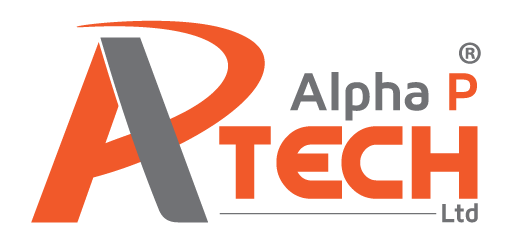Bridging the Gap Between Awareness and Conversion
In many service-led B2B businesses, there’s a growing disconnect between the content marketing teams produce and the real needs of sales teams. While marketing often excels at building awareness and generating interest, sales professionals are left armed with little more than blog posts and brand messaging when what they really need are tools that help them close.
The truth is, attention alone doesn’t convert. What sales teams crave are meaningful conversations, credibility, and tailored content that accelerates decision-making. That’s where strategic B2B copywriting comes in, not as an afterthought, but as a vital part of sales enablement and modern B2B sales strategies.
In a previous article, I explored how aligning your sales and marketing teams can drive stronger results. Now, I want to take that one step further: looking through the lens of a copywriter to explore how content can serve as a genuine sales tool, grounded in thought leadership and built to move deals forward.
Recap: Key Points from My Previous Article
In my previous article, How to Align Your Sales and Marketing Teams for Better B2B Results, I explored the foundations of true alignment, starting with a shared understanding of what defines a qualified lead. Rather than working in silos, successful B2B sales strategies depend on ongoing collaboration between marketing and sales, especially after a lead is handed over.
That collaboration extends to messaging consistency too. When your top-of-funnel content says one thing and your sales pitch says another, it creates confusion, and in B2B, confusion kills conversion. The takeaway was clear: aligned teams close more deals, more confidently.
This article builds on that foundation by examining what marketing can tangibly give sales—starting with content that’s not only well-written but strategically crafted through the lens of B2B copywriting, sales enablement, and practical thought leadership.
Why Awareness Isn’t Enough in Service-Led B2B
In service-led B2B industries, buyers aren’t simply choosing a product; they’re investing in people, processes, and long-term partnerships. What they’re really buying is expertise and trust. While top-of-funnel awareness content is useful for attracting attention, it rarely supports the deeper, more complex conversations that happen further along the sales journey.
A well-designed infographic or thought leadership piece might spark initial interest, but it’s often not enough to help a potential client overcome internal objections, justify budget allocation, or fully understand the value on offer.
This is where many B2B sales strategies begin to fall apart, especially when marketing and sales teams are not aligned. Without relevant tools to support decision-stage discussions, sales professionals are left to plug the gaps themselves, leading to mixed messaging and lost momentum. The outcome is all too familiar: high MQL drop-off rates, slower close times, and missed revenue targets.
What’s needed is content that’s specifically created for sales enablement—B2B sales content that builds authority, addresses objections, and helps move buyers toward a confident yes. Strategic B2B copywriting plays a key role in making that happen.
The Copywriter’s Role in Sales Enablement
A skilled B2B copywriter is far more than a wordsmith focused on clicks and impressions. Their true value lies in writing for conversion, clarity, and sales success—especially in high-consideration, service-led sectors. Great copy doesn’t just inform; it persuades, reassures, and moves buyers through the decision-making process with confidence. In the context of sales enablement, the copywriter becomes a crucial player in shaping assets that actually help close deals.
Copywriters are uniquely equipped to translate complex positioning into persuasive, easy-to-digest content. They can anticipate objections before they arise, embedding subtle but powerful social proof to reinforce credibility. They’re also adept at matching tone and language to the conversations sales teams are already having—bridging the gap between brand voice and real-world dialogue. This kind of sales enablement writing supports every stage of the funnel, not just the top.
For marketing leaders looking to strengthen their B2B sales strategies, it’s time to treat copywriters not as content creators, but as strategic assets who bring true thought leadership and commercial impact to the table.
What Sales Teams Actually Need (With Copy-Driven Content Examples)
To support sales teams effectively, marketing must go beyond high-level messaging and deliver assets that directly help move conversations forward. This is where sales enablement meets B2B copywriting. It’s not just about having content—it’s about having the right content, shaped by buyer intent, sales context, and real-world objections.
Here are six high-impact types of sales enablement content that every service-driven B2B sales team should have in their toolkit, and how thoughtful, strategic copy makes each one more powerful and persuasive.
-
Follow-Up Email Sequences
These are structured, purpose-driven email templates used after discovery calls, demos, or initial proposals. They nurture interest, personalise the message around each prospect’s pain points, and reinforce the value of your solution.
Why it works: Keeps the conversation warm while reinforcing credibility.
Copy tip: Focus on clarity, avoid over-selling, and include one strong call to action.
Use case: A tailored email that references a recent call and links to a relevant case study or one-pager.
-
Micro Case Studies
These are short, focused stories showcasing client results in a clear, digestible format. They’re designed for sharing during live conversations, not for browsing on a blog.
Why it works: Provides quick, compelling proof that builds trust without overwhelming the reader.
Copy tip: Lead with results and include a clear “before and after” transformation.
Use case: “How a small architecture firm increased client retention by 40% in 60 days.”
-
One-Pagers
Single-page assets that outline a specific problem and your solution, tailored to a particular vertical or use case. Ideal for buyers to share internally with stakeholders.
Why it works: Offers clarity and alignment in long sales cycles involving multiple decision-makers.
Copy tip: Use a bold headline, keep paragraphs short, and finish with a results-focused call to action.
Use case: “How Professional Services Firms Reduce Proposal Time with Strategic Copy and Positioning.”
-
Battlecards
Quick-reference documents that help sales reps handle objections, answer comparison questions, and highlight your unique differentiators.
Why it works: Equips sales with the messaging confidence they need during competitive conversations.
Copy tip: Keep it conversational and focus on value, not features.
Use case: A battlecard showing how your offer compares to larger, less agile competitors.
-
Objection-Handling Scripts
Prepared responses to common objections such as “We already have a provider” or “This isn’t the right time.” These are rooted in empathy and reframing.
Why it works: Maintains momentum in the sales process rather than letting objections derail the conversation.
Copy tip: Start by validating the concern, then gently pivot to an alternative perspective or proof point.
Use case: “I completely understand—many of our clients felt the same at first, but what changed for them was…”
-
Proposal Primers
These are short summaries included with or just before sending a formal proposal. They reiterate the buyer’s key challenges, proposed solutions, and expected outcomes.
Why it works: Helps reframe your offer as a solution to their specific pain, not just a document of deliverables.
Copy tip: Write it like a narrative, not a pitch. Anchor each point to the buyer’s own words.
Use case: A primer that reads: “Here’s what we heard from your team, and how our offer is designed to help.”
Together, these assets form the backbone of any strong B2B sales strategy, providing a consistent voice, clear value, and decision-stage relevance. Each one becomes more effective when grounded in smart B2B marketing content and informed by experienced copywriting for sales teams.
From Alignment to Action: Building a Sales-First Content Culture
While strategic alignment between sales and marketing is essential, it’s only the beginning. Real impact comes from turning that alignment into action—specifically, creating content that directly supports the sales process. This means shifting from a marketing-first mindset to a sales-first content culture, where every piece of content is shaped by real-world conversations, objections, and outcomes. Regular syncs between sales and marketing teams are invaluable. These meetings should go beyond campaign updates and delve into what sales reps are hearing on the ground: which objections are stalling deals, which stories are resonating, and what content is missing at key touchpoints.
This is where B2B copywriting truly shines. Copywriters should be encouraged to listen in on sales calls, attend discovery meetings, and ask questions like, “Where do prospects hesitate, and what story would help move them forward?” These insights allow for the creation of more relevant, conversion-focused assets grounded in sales enablement, practical experience, and informed thought leadership. When content is driven by this level of collaboration, it supports smarter B2B sales strategies and contributes directly to pipeline growth.
Conclusion: Copy That Closes (Not Just Attracts)
In today’s competitive landscape, sales teams need far more than brand awareness—they need focused, practical assets that turn curiosity into commitment. It’s not enough to create content that looks good or ranks well.
What truly drives results is high-converting B2B content that supports conversations, builds trust, and answers the real questions prospects are asking. This is where B2B copywriting becomes a powerful tool in your sales enablement strategy. When crafted with intention, great copy helps your sales team tell the right story at the right time, with clarity and confidence.
Need sales-ready copy that supports your team through every stage of the funnel? Let’s chat about how Alpha P Tech can help you turn your content into a conversion engine.



